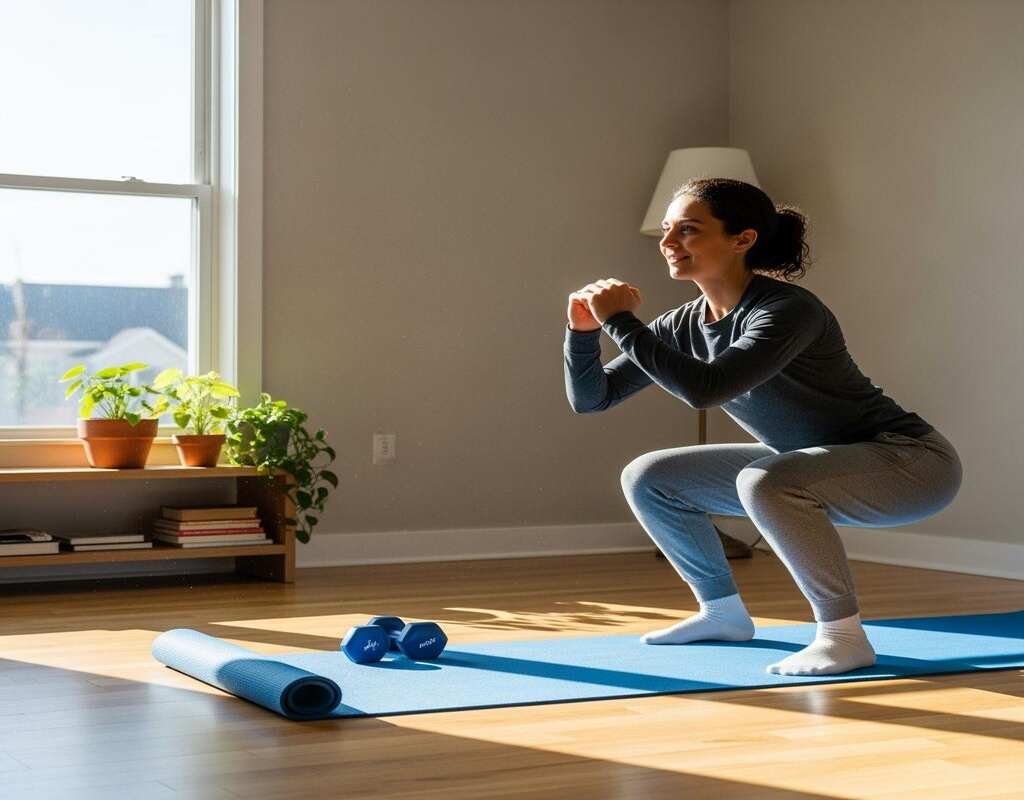
In today’s fast-paced world, balancing work, family, and daily responsibilities can make it tough to prioritize exercise. But here’s the truth: you don’t need a gym membership, expensive equipment, or hours of free time to stay healthy. With short, effective at-home workouts, even the busiest people can improve fitness, boost energy, and support long-term health.
According to the CDC’s Physical Activity Guidelines, just 150 minutes of moderate activity per week—broken into short daily sessions—can make a big difference in preventing chronic disease and improving quality of life.
This guide walks you through easy at-home workouts designed for busy people, along with tips to stay consistent, overcome barriers, and make fitness a natural part of your routine.
Before we jump into the workouts themselves, let’s talk about why at-home workouts are a smart choice:
Related reading: Stress Management Techniques That Really Work.
Good news—most of these workouts require little to no equipment. If you want to enhance your routine, consider these affordable, space-saving tools:
But don’t worry if you don’t have any of these—you can still get an effective workout using just your bodyweight.
Here are some quick and effective workouts, designed to fit seamlessly into a busy lifestyle. Each workout can be completed in 10 to 30 minutes and requires minimal space.
Perfect for those ultra-busy days, this quick circuit hits all major muscle groups and boosts your metabolism.
How to do it:
This workout increases heart rate, tones muscles, and can be done anywhere in your home.
Begin your morning with a mix of soft stretches and simple strength exercises to energize both your body and mind.
Routine:
This workout improves flexibility and gently strengthens muscles to prepare you for the day ahead.
If you want to boost endurance and strengthen your core, this workout fits perfectly into a lunch break.
Workout plan:
This routine is excellent for burning calories and toning your abs and legs.
Great for those who want a slightly longer session focused on building muscle and improving balance.
Exercises:
To make your workouts more challenging over time, consider incorporating dumbbells or resistance bands.
Track your progress with the Best Wearable Health Devices of 2025.
Regular at-home workouts also benefit mental and emotional well-being:
Many busy people struggle with motivation or feel uncertain about working out alone. Here’s how to overcome common obstacles:
See also: Daily Habits for Lifelong Wellness
Use this simple routine to help you stay consistent with your exercise habits:
| Day | Workout Type | Duration |
|---|---|---|
| Monday | Full Body Blast | 10 minutes |
| Tuesday | Stretch & Strength | 15 minutes |
| Wednesday | Cardio & Core Burner | 20 minutes |
| Thursday | Rest or Light Yoga | 10 minutes |
| Friday | Strength & Stability | 30 minutes |
| Saturday | Active Rest (walk, dance) | 20 minutes |
| Sunday | Rest or gentle stretching | 15 minutes |
No, most at-home workouts use bodyweight. Equipment like resistance bands or dumbbells can enhance workouts but are optional.
Aim for at least 3-5 times per week. Even short sessions add up over time.
Combined with healthy eating, regular exercise helps with weight management. Focus on consistency rather than quick fixes.
Start slow, modify exercises, and gradually increase intensity as you get stronger.
Set small goals, track progress, mix up routines, and find support through friends or online groups.
The best workout is the one you can do consistently. At-home workouts are flexible, affordable, and designed to fit busy schedules. Even short sessions add up over time, helping you stay energized, reduce stress, and improve overall health.
Start small today, stay consistent, and remember—your health is one of the best investments you can make. Share this guide with a friend who needs a fitness boost and check back for more health and wellness insights.
Disclaimer: This article is for informational purposes only and should not be taken as medical advice. Always consult with your physician or healthcare provider before starting any new exercise program, especially if you have pre-existing health conditions.
Founder of My Health Tech Talk. He is a health informatics professional, researcher, and graduate assistant with a passion for digital health and innovation, medical tourism and health tips. Learn more about author and his mission on the About Us page
This post was last modified on October 1, 2025
We use cookies to improve your experience, analyze site traffic, and personalize content. By continuing to browse our site, you agree to our use of cookies.
Read More